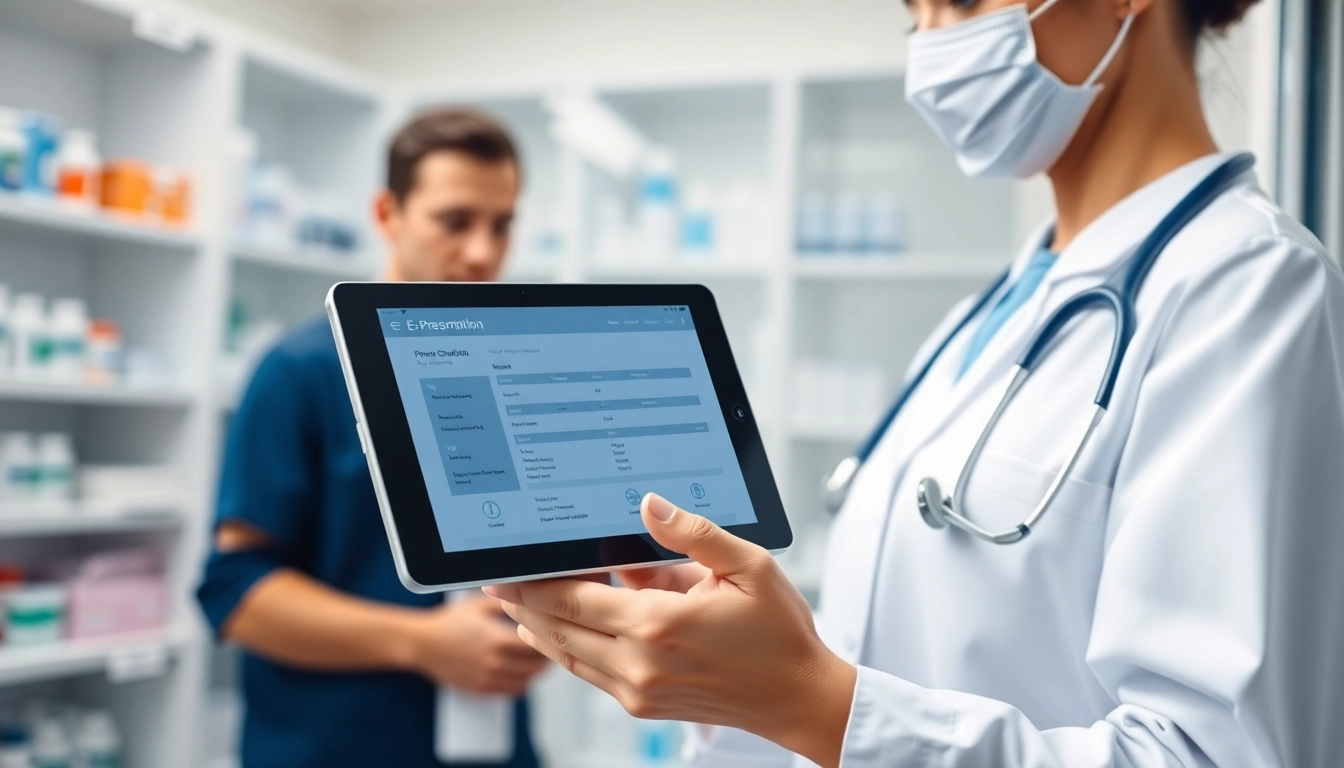The Rise of Mobile Eprescription Systems
In an age where technology seamlessly integrates into our daily lives, the healthcare sector is undergoing a profound transformation, notably through mobile e-prescription systems. These innovative platforms revolutionize how prescriptions are issued, filled, and managed, enhancing efficiency and accuracy while prioritizing patient safety. This shift towards mobile solutions is fueled by a diverse range of factors, from the need for increased convenience to the pursuit of error-free medication management. By exploring the benefits of mobile e-prescription, we can better understand its impact on health outcomes and operational efficiencies across the healthcare landscape. One major aspect to consider is the benefits of mobile eprescription.
Defining Mobile Eprescription
Mobile e-prescription refers to the use of mobile technology to create, transmit, and manage prescriptions electronically. Unlike traditional prescribing methods, which rely on handwritten notes or phone calls, e-prescriptions streamline the entire process through secure software applications accessible via smartphones and tablets. This facilitates communication between healthcare providers, pharmacies, and patients, ensuring prescriptions are accurate and readily available.
The Transition to Digital Prescribing
The transition to digital prescribing has been gradual yet impactful. Initially, many healthcare providers relied on paper-based systems, leading to frequent errors due to illegible handwriting or miscommunication. The introduction of electronic health records (EHRs) paved the way for e-prescriptions, allowing clinicians to dictate prescriptions directly into a system that can then interface with pharmacies. As mobile technology developed, the potential for apps that support e-prescribing came into focus, leading to more tailored and efficient solutions.
Key Drivers of Adoption
A variety of factors drive the adoption of mobile e-prescription systems. The need for enhanced medication safety is paramount; studies indicate that many medication errors stem from misunderstandings or transcription errors related to handwritten prescriptions. Moreover, regulatory agencies increasingly support e-prescribing initiatives, incentivizing healthcare providers to adopt these solutions to receive reimbursements. Finally, patient demand for convenience and accessibility plays a significant role; individuals today expect instantaneous services at their fingertips, including healthcare.
Benefits of Mobile Eprescription for Patients
Improved Access to Medications
One of the primary advantages of mobile e-prescription is improved access to medications. Patients can easily order prescriptions from home or while on the go, eliminating the need to visit healthcare facilities. This is particularly beneficial for individuals with mobility challenges or those living in remote areas where accessing pharmacies is difficult.
Reduced Wait Times at Pharmacies
With the integration of mobile e-prescribing, patients experience significantly reduced wait times at pharmacies. Prescriptions sent electronically are immediately available for pharmacists to fill, minimizing the bottlenecks often associated with traditional paperwork. This means patients spend less time waiting for their medications and can focus on their health.
Enhanced Medication Adherence
Mobile e-prescription systems foster enhanced medication adherence by providing automatic reminders and notifications for refills or medication schedules. This technology empowers patients by sending alerts directly to their smartphones, allowing them to stay on top of their medications, thus leading to better health outcomes and fewer complications from missed doses.
Benefits of Mobile Eprescription for Healthcare Providers
Increased Prescription Accuracy
For healthcare providers, one of the most significant benefits of mobile e-prescription is the increased accuracy of prescriptions. By eliminating handwritten errors and misinformation, clinicians can ensure that their patients receive the correct dosages and medications, reducing the potential for adverse drug interactions or allergic reactions.
Streamlined Workflow Processes
Mobile e-prescription systems streamline workflow processes within healthcare settings. Clinicians can create and send prescriptions in real-time, integrate patient history, and access drug interaction databases without navigating through cumbersome paperwork. This enhanced workflow translates to lower operational costs and an ability to see more patients effectively.
Effective Management of Patient Data
The management of patient data also gains substantial improvements through mobile e-prescriptions. Healthcare providers can maintain detailed electronic records that can be quickly updated and accessed. This enables more accurate tracking of medications, simplifies reports, and facilitates better communication with patients regarding their treatment plans.
Benefits of Mobile Eprescription for Pharmacists
Minimized Dispensing Errors
Pharmacists reap significant benefits from mobile e-prescription through minimized dispensing errors. Electronic prescriptions are less prone to interpretation issues compared to handwritten ones. This leads to a decrease in incidents where medications are incorrectly dispensed due to misunderstood instructions or incorrect dosages.
Improved Patient Communication
Another advantage for pharmacists is improved communication with patients. Mobile e-prescription provides an avenue for pharmacists to engage clients proactively, offering counseling and education on medications while also addressing any concerns. This open line of communication provides a better overall service experience for patients.
Efficient Prescription Management
Mobile e-prescriptions allow pharmacists to manage prescription inventories efficiently. They can track prescriptions in real-time, manage orders from various providers, and predict inventory needs more accurately based on prescription trends. Moreover, assistance in maintaining compliance with regulatory mandates becomes more achievable.
Future Trends in Mobile Eprescription
Integration with Health Data Systems
As technology continues to evolve, one promising trend for the future of mobile e-prescription is its integration with comprehensive health data systems. These integrations will enable healthcare providers and patients to access a centralized database of health records, medication histories, and treatment plans, facilitating a holistic approach to patient care.
AI and Machine Learning in Prescribing
The incorporation of artificial intelligence (AI) and machine learning into e-prescribing anticipates improved outcomes, as these technologies can analyze vast amounts of data to provide predictive insights. By identifying potential drug interactions, suggesting alternative medications, or recommending adherence strategies based on individual behavior patterns, AI can significantly enhance prescribing accuracy and efficiency.
Expansion to Rural and Underserved Areas
Finally, the future may see broader expansion of mobile e-prescription services into rural and underserved areas. Telehealth initiatives and mobile apps are likely to bridge the healthcare access gap, allowing patients in these regions to benefit from advanced medical technologies, such as mobile e-prescription, which can lead to better health outcomes.



